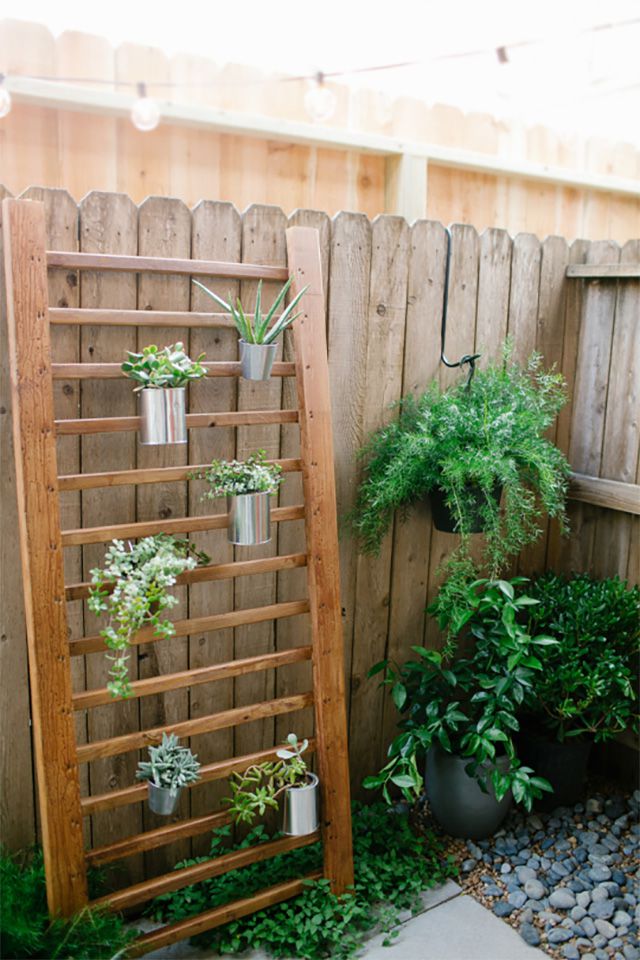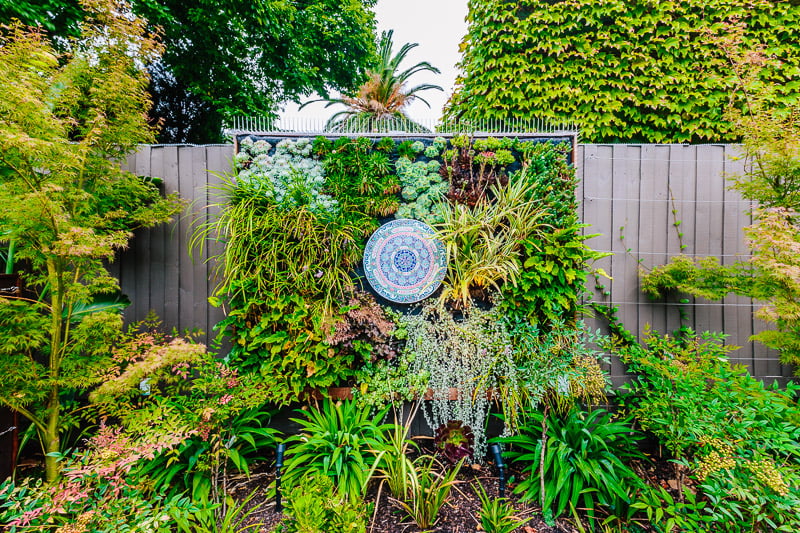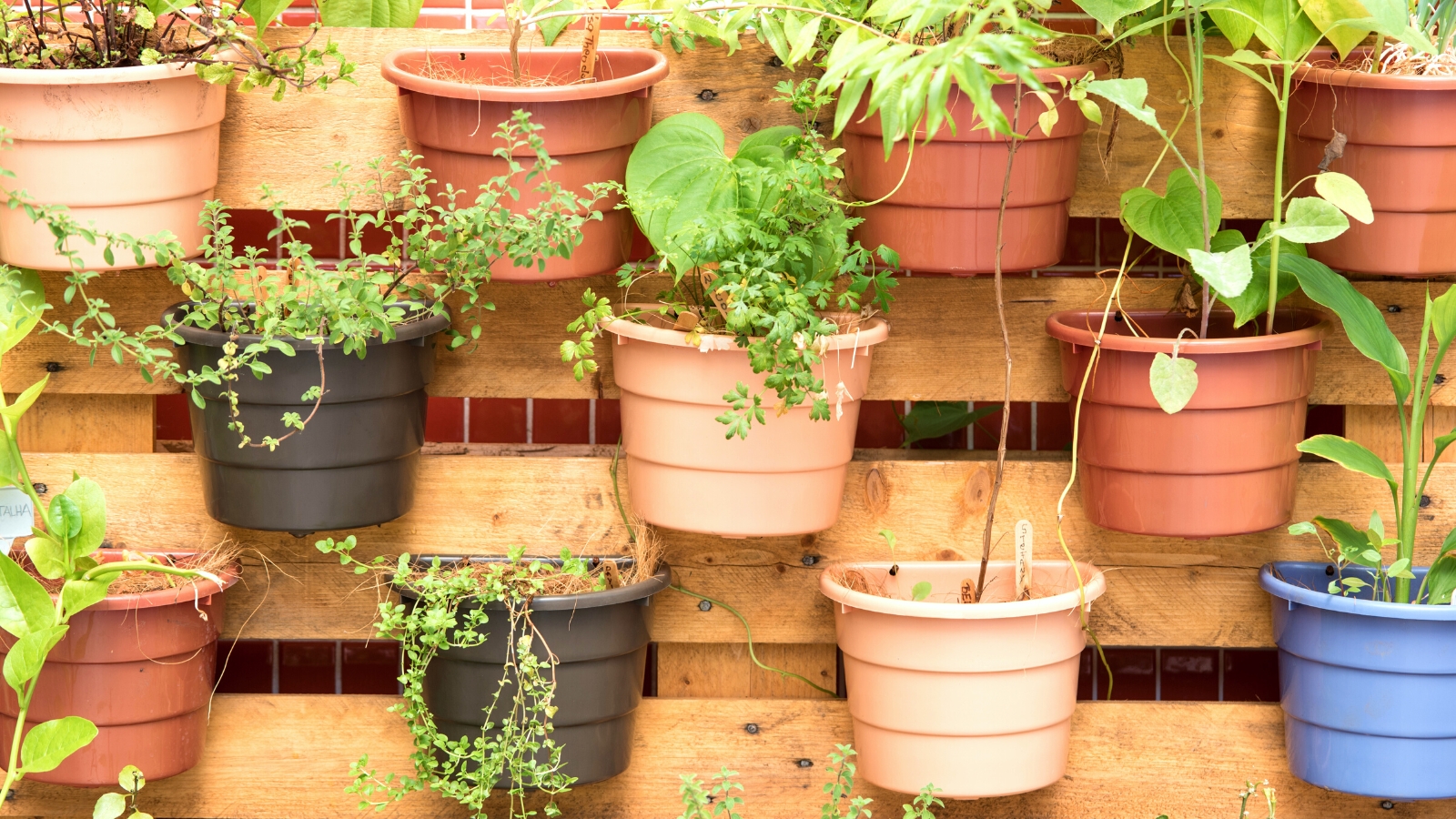If you’re looking to spruce up your outdoor space without breaking the bank, then vertical gardening might be the perfect solution for you. With this unique gardening technique, you can create a lush and vibrant garden using limited space and resources. In this article, we will explore some DIY tips and tricks that will help you get started with vertical gardening on a budget. From repurposing old containers to utilizing vertical structures, you’ll discover simple and cost-effective ways to create a stunning vertical garden that will transform your space into a green oasis. So, grab your gardening gloves and let’s dig in!

This image is property of k2j4u5m5.stackpathcdn.com.
Choosing the Right Vertical Gardening System
When it comes to vertical gardening, the first step in creating a successful and budget-friendly garden is choosing the right system. There are several factors to consider, starting with the available space. Take a good look at your garden or balcony and evaluate how much vertical space you have to work with. This will dictate the type of system you can use and the number of plants you can grow.
Next, decide on the type of system that suits your needs and budget. There are various options available, including wall-mounted systems, free-standing structures, and hanging gardens. Each has its advantages and considerations, so take the time to research and find the one that aligns with your gardening goals.
One crucial aspect often overlooked is the weight-bearing capacity of your chosen structure. Depending on the materials used and the number of plants you plan to grow, it’s essential to ensure that the system can support the weight. This will prevent any potential accidents or damage to your plants, keeping your vertical garden safe and thriving.
Materials for Creating a Budget-Friendly Vertical Garden
Creating a vertical garden doesn’t have to break the bank. By utilizing reusable household items, recycled materials, and affordable gardening supplies, you can create a beautiful garden space without a hefty price tag.
Look around your home for items that can be repurposed into planters or trellises. Old buckets, cans, and even mason jars can be transformed into unique containers for your plants. Not only will this save you money, but it will also give your garden a distinct and personalized touch.
Recycled materials are also great options for a budget-friendly vertical garden. Consider using wooden pallets as a base for your garden, or repurpose old shoe organizers by hanging them on a wall and filling each pocket with plants. These materials are often readily available and can be obtained for free or at a minimal cost.
When it comes to gardening supplies, you don’t need to splurge on expensive products. Most nurseries and gardening centers offer affordable options for soil, fertilizer, and seeds. Look for generic or store brands that offer quality at a lower price. Remember, it’s the care and attention you put into your garden that will make the real difference, not necessarily the brand of supplies you use.

This image is property of media.blitsy.com.
DIY Vertical Garden Structures
If you’re someone who enjoys getting creative and hands-on, building your vertical garden structures can be a fun and budget-friendly option. Here are a few DIY ideas to consider:
Pallet gardens:
Wooden pallets can be easily transformed into a vertical garden by attaching potted plants to the slats. They not only provide a rustic and unique look but also maximize your planting space. Simply secure the pallet to a wall or fence, fill each gap with soil, and plant your favorite flowers, herbs, or vegetables.
Hanging shoe organizers:
Old shoe organizers can make excellent vertical gardens. Hang them on a wall or fence and fill each pocket with soil and plants. This is a great option for growing herbs or small flowering plants, and it can be easily customized to fit your available space.
Gutter gardens:
Recycled gutter sections can be repurposed into unique vertical gardens. Attach them horizontally to a wall or fence, fill them with soil, and plant your favorite plants. Not only does this create a visually appealing garden, but it also allows for easy watering and drainage.
Choosing the Right Plants for a Vertical Garden
When it comes to selecting plants for your vertical garden, there are a few things to keep in mind to ensure their success. Consider the sunlight requirements of the plants you choose. Some plants thrive in full sun, while others prefer partial shade. Observe the location of your vertical garden and select plants accordingly to ensure they receive the optimal amount of sunlight.
Space constraints are another essential factor to consider. In a vertical garden, the available space is limited, so choose plants that are compact and well-suited for vertical growth. Look for varieties that don’t spread too much horizontally, focusing instead on vertical growth and dense foliage.
Select plants with shallow root systems. As vertical gardens typically have limited soil depth, it’s crucial to choose plants that can thrive with shallow roots. Herbs, lettuce, and strawberries are examples of plants that do well in such conditions.

This image is property of empire-s3-production.bobvila.com.
Soil and Watering Techniques for Vertical Gardens
The choice of soil mix is crucial for the success of your vertical garden. Choose a lightweight potting mix that provides proper drainage and aeration, while still retaining enough moisture for plant growth. Avoid using heavy soils that may impede root growth and lead to waterlogging.
To improve drainage in your vertical garden, consider amending the soil with perlite, vermiculite, or coarse sand. These additives help promote air circulation and prevent water from pooling, reducing the risk of root rot and other water-related issues.
Proper watering techniques are essential for the health of your vertical garden. Vertical gardens may require more frequent watering due to their limited soil capacity. Monitor your plants closely and water them regularly, but be mindful not to overwater. An easy way to check if your plants need watering is to stick a finger into the soil; if it feels dry up to your knuckle, it’s time to water.
Maintenance Tips for Vertical Gardens
To keep your vertical garden looking beautiful and thriving, regular maintenance is crucial. Here are some maintenance tips to keep in mind:
Regular pruning and trimming:
As your plants grow, it’s essential to prune and trim them regularly to maintain their shape and prevent overcrowding. Remove any dead leaves or stems to promote healthy growth and prevent the spread of diseases.
Fertilizing requirements:
Vertical gardens can benefit from regular fertilization to ensure optimal plant growth. Use a balanced fertilizer or organic compost to provide the necessary nutrients. Follow the instructions on the fertilizer packaging and apply it as recommended.
Troubleshooting common issues:
Monitor your plants for any signs of pests or diseases. If you notice any issues, take prompt action to prevent them from spreading. Organic pest control methods, such as using neem oil or introducing beneficial insects, can help keep your vertical garden healthy and pest-free.

This image is property of www.thespruce.com.
Creative Ways to Maximize Vertical Space
In a vertical garden, maximizing the available space is key. Here are some creative ideas to help you make the most of your vertical space:
Utilizing trellises and stakes:
Trellises and stakes are excellent tools for encouraging vertical growth in plants. Install them in your vertical garden to provide support and structure for climbing plants such as beans, peas, or cucumbers. This not only saves space but also creates a beautiful visual effect.
Stacking containers:
Stacking containers are a great way to grow multiple plants in a small vertical space. Use tiered planters or stack pots on top of each other, creating a vertical tower of plants. This technique allows you to grow a variety of plants in a compact area.
Creating hanging planters:
Hanging planters are an ideal solution for balconies or small spaces where floor space is limited. Hang baskets or pots from the ceiling or railing, and fill them with trailing plants such as ivy or petunias. This adds color and foliage to your vertical garden while utilizing unused vertical space.
Vertical Edible Gardens on a Budget
Growing your own food is not only rewarding but can also help save money on groceries. Here are some ideas for creating a vertical edible garden on a budget:
Growing herbs in small vertical spaces:
Herbs are ideal for vertical gardens as they have shallow root systems and can thrive in small vertical spaces like containers or hanging planters. Plant herbs such as basil, parsley, or thyme, and enjoy fresh flavors right from your garden.
Planting compact vegetables and fruits:
Choose compact varieties of vegetables and fruits that are well-suited for vertical growth. Tomatoes, peppers, strawberries, and salad greens can all be grown vertically, saving precious garden space and providing a bountiful harvest.
Utilizing vertical hydroponics:
Hydroponics is a soil-free gardening technique that allows you to grow plants vertically using water and nutrient solutions. This method is highly efficient and can be implemented on a budget using simple DIY setups. With vertical hydroponics, you can grow a wide range of edible plants, including herbs, leafy greens, and even small fruits.

This image is property of k2j4u5m5.stackpathcdn.com.
Vertical Gardening for Urban Dwellers
Living in an urban environment doesn’t mean you can’t enjoy the benefits of gardening. Here are some ideas for vertical gardening in urban settings:
Balcony gardening ideas:
If you have a balcony, it can be transformed into a beautiful oasis with the right vertical gardening techniques. Utilize hanging planters, trellises, and railing-mounted containers to make the most of the available space. You can grow a variety of plants, from colorful flowers to fresh herbs and small vegetables.
Vertical gardens for apartment balconies:
For apartment dwellers with limited outdoor space, vertical gardens are a perfect solution. Install wall-mounted systems or self-standing structures that can be placed on balconies or near windows. These vertical gardens provide a lush and green environment, even in a small urban setting.
Space-saving green walls for small yards:
If you have a small yard or patio, creating a green wall can be an excellent way to maximize your space. Use hanging planters, vertical plant racks, or vine-covered trellises to transform an empty wall into a vibrant vertical garden. Not only does this add beauty, but it also provides privacy and reduces noise in urban environments.
Vertical Gardening Tips for Sustainability
Vertical gardening can be eco-friendly and sustainable with a few simple practices. Here are some tips for sustainable vertical gardening:
Water conservation strategies:
Maximize water conservation in your vertical garden by implementing strategies such as using mulch to retain moisture and installing a drip irrigation system for efficient watering. Collect rainwater for irrigation whenever possible, and avoid watering during the hottest part of the day to minimize evaporation.
Composting in a vertical garden:
Utilize composting to reduce waste and provide nutrient-rich soil for your vertical garden. Create a small compost bin or worm farm to recycle kitchen scraps and yard waste. Incorporate the compost into your garden beds regularly to improve soil fertility and support healthy plant growth.
Using organic pest control methods:
Avoid using harmful chemicals in your vertical garden by opting for organic pest control methods. Introduce beneficial insects such as ladybugs or lacewings to control pests naturally. You can also make homemade pest sprays using garlic, neem oil, or soap solutions. These methods are environmentally friendly and pose no harm to beneficial insects or wildlife.
Taking the time to choose the right system, select suitable plants, and provide proper care will ensure the success of your budget-friendly vertical garden. Get creative, enjoy the process, and watch your garden flourish in even the smallest of spaces. Vertical gardening is not only a practical solution for urban dwellers but also a beautiful way to bring nature to your surroundings.






